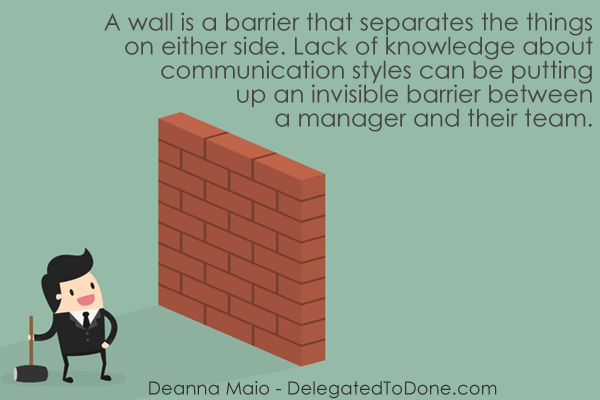When it comes to communication, there are dos and don’ts. We have already discussed the dos. Effective communication depends as much on the speaker as it does the listener. But halves must be aligned in order for the exchange to be deemed successful. Now it’s time to discuss the don’ts. What can hinder your message from being received?
There’s a Wall There …and Speed Bumps
A wall is a barrier that separates the things on either side. Lack of knowledge about communication styles can be putting up an invisible barrier between a manager and their team. As you speak and they respond, both messages are being absorbed by the wall.
Speed bumps in the road can be annoying. But, they do have a purpose. The object is to slow our progress. If you take a speed bump too fast, it can even halt your forward movement by tearing up your vehicle. The same is true when talking about effective communication. A speed bump signifies a problem. If you don’t slow down and ignore it, an even greater problem awaits.
Four Communication Style Problems
Let’s move away from the road themes and get to the details. Listening is KEY to knowing when you are approaching a problem or have gotten yourself into a situation that needs to be rectified.
- Ignoring needs of others – Ignoring what other people need to hear to get on board with your plan leads to a lack of connection with that person. For example, an Anchor needs to hear the human element of the plan. Sidestep that and you will likely lose their support.
- Avoiding people – Just because someone speaks another communication language is not a reason to avoid them. By doing so, you miss out on valuable insight and ideas that could further the success of the team. It may take more time and effort to hone your grasp of different communication styles, but it is well worth it in the long run.
- Discounting contributions – When we don’t take the time to understand communication styles, it is easy to discount or negate the words of those who don’t see from our point of view. Their insights are not given as much weight in conversations because their style is not like ours.
- Condescending responses – No one likes to be talked down to. When we label those with different communication styles as “troublesome”, we don’t listen to their suggestions but respond in negative ways based on erroneous assumptions on our part. They don’t speak our language so we don’t believe they have anything useful to say.

